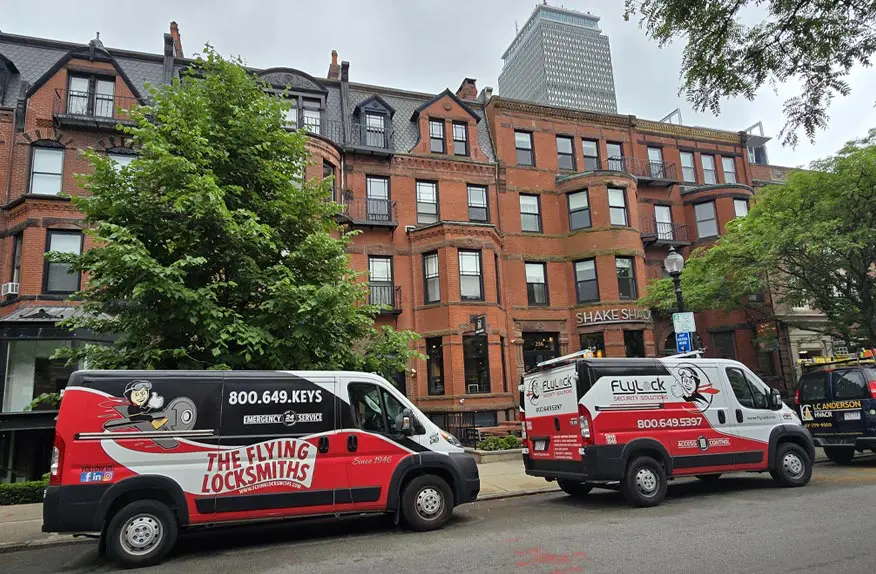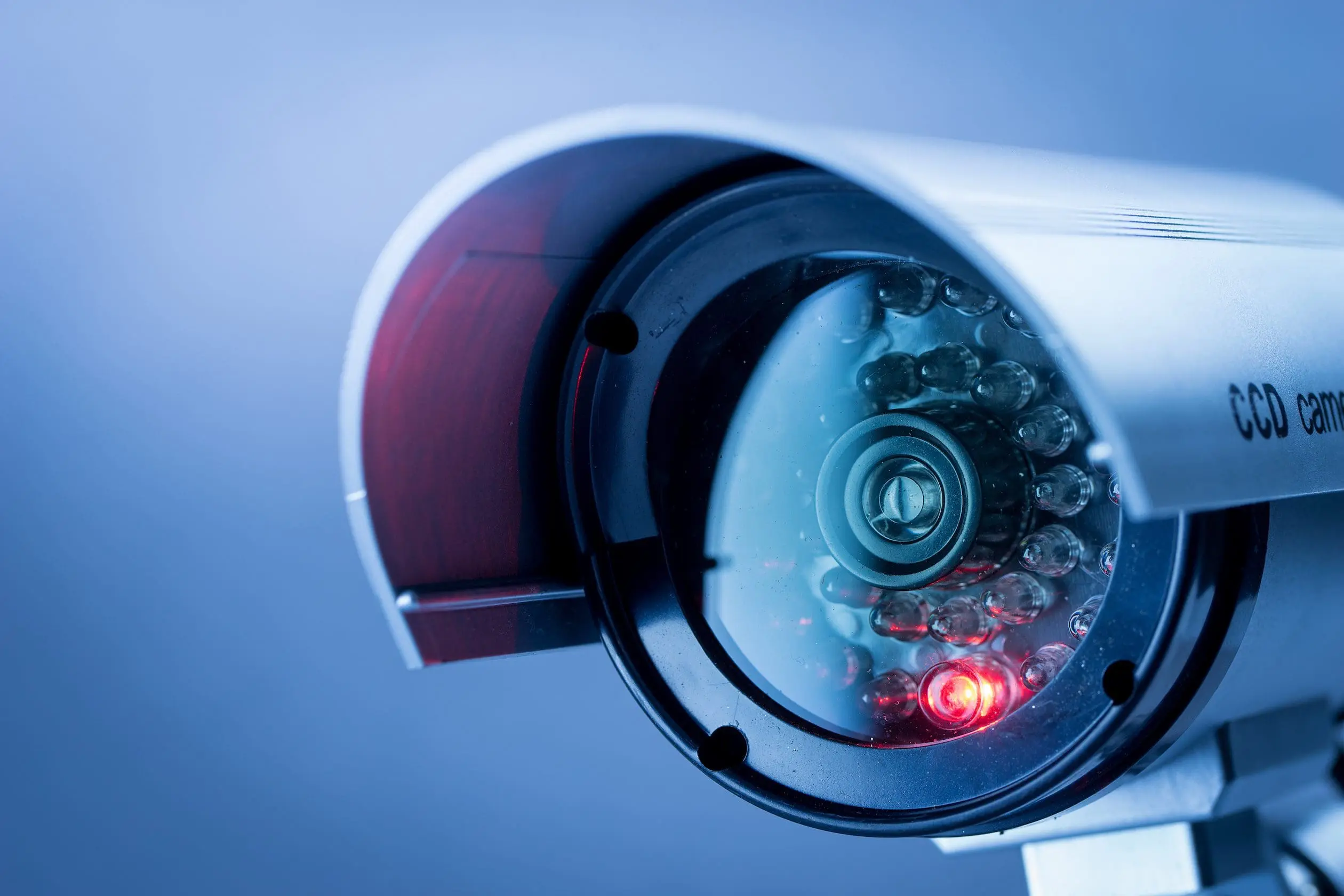Since the 1950s, security professionals have relied on closed-circuit television (CCTV) systems to safeguard businesses, using video surveillance to monitor and deter potential threats. While the basic principles of these systems remained unchanged for decades, the last ten years have witnessed a significant evolution in surveillance technology.
From the early days of capturing footage in Trafalgar Square, where CCTV was first employed to monitor royalty, to the advanced outdoor solutions we have today, including micro cameras, drones, and sophisticated security camera tools, the transformation has been remarkable. Modern systems now incorporate features like audio recording, offering comprehensive surveillance solutions that were once unimaginable.
TABLE OF CONTENTS
Security Camera and Video Surveillance Topics this Blog Includes:
- The Early Days of Video Surveillance Systems & Cameras
- Camera Security in the 1970s to the 1990s
- The Modern Era: A New Security System is Coming
- The Use of Drones with CCTV Cameras for Video Surveillance
- Enhance Your Security With Advanced Surveillance Solutions from The Flying Locksmiths and FlyLock Security Solutions
The Early Days of Video Surveillance Systems & Cameras
George Orwell introduced the concept of constant monitoring in his visionary novel 1984, published in 1949, but the practical use of miniature movie cameras for covert surveillance had already been established before 1940. These early cameras were essential tools for espionage, laying the groundwork for more advanced video surveillance technologies.
In 1951, a groundbreaking moment occurred when the first live images were successfully captured on a television camera and recorded via a video tape recorder, marking the birth of modern video surveillance. By the mid-1960s, law enforcement in the United States began deploying this revolutionary video surveillance system in public spaces, revolutionizing crime prevention and management. Simultaneously, NASA harnessed these new video networks to map the lunar surface, sending detailed graphics back to Earth.
As video recording and monitoring technology advanced, concerns about privacy emerged, challenging society to balance security with individual rights.
Camera Security in the 1970s to the 1990s
During the 1970s, what was once the exclusive domain of governments—closed-circuit television—began to be widely adopted by banks and other financial institutions as a critical security measure against theft. This era marked a significant leap forward in video surveillance, as advancements in microchip technology dramatically reduced the size of cameras and extended the duration of video recording. Businesses quickly recognized the value of capturing criminal acts on video, with the mere presence of a camera often serving as a powerful deterrent against unlawful activities. ATMs, frequent targets of theft, became more secure with the integration of video surveillance solutions. Simultaneously, the rise of 'Nanny Cams' provided parents with the ability to monitor children, pets, and caregivers, enhancing home security.
The rapid growth of surveillance technology continued into the 1990s, driven by new public sector acceptance following the 2001 World Trade Center attack. Schools and police departments began employing facial recognition software and advanced analytics as part of their video management strategies to locate missing children or apprehend criminals. City-wide searches of security cameras and surveillance systems allowed law enforcement to respond to incidents more swiftly, with video management solutions offering real-time alerts and critical insights. As technology evolved, the public began to learn more about the potential of these systems, embracing them as essential tools in both security and crime prevention.
The Modern Era: A New Security System is Coming
The technology behind surveillance devices has continued to evolve at a rapid pace, with significant public sector adoption following the 2001 World Trade Center attack. This pivotal event marked a turning point in the acceptance and expansion of video surveillance as schools and police departments began utilizing facial recognition software and sophisticated analytics to track down missing children or identify criminals. City-wide searches of surveillance systems became a powerful tool for law enforcement, enabling quicker and more efficient responses to emerging threats.
In the 2000s, the internet revolutionized video surveillance, leading to a surge in both business and personal protection solutions. The integration of IP-based cameras into networks allowed for remote monitoring, giving users the ability to watch live footage from anywhere in the world. This era also saw the introduction of doorbell cameras, which transformed home security by providing real-time video feeds and notifications through a connected app. These innovations made it possible for homeowners to talk directly to visitors and save video recordings for later review.
Today, video surveillance systems offer an array of options, from traditional indoor setups to advanced outdoor solutions designed to withstand the elements. Cameras are now equipped with high-definition video capabilities, night vision, and motion detection, providing comprehensive security coverage. The integration of smart technology allows for seamless management of these systems, with apps enabling users to control their security settings remotely. Whether it’s safeguarding a business or enhancing home security, modern video surveillance solutions have become indispensable tools in today's world.
Looking for Video Surveillance Solutions for your Commercial Property?

The Use of Drones with CCTV Cameras for Video Surveillance
As drone technology advances and components continue to miniaturize, the integration of drone surveillance into modern security systems is becoming increasingly commonplace. With the cost of internet connectivity dropping and the quality of connections improving, large organizations can now effortlessly manage thousands of linked video systems. These systems, equipped with high-definition CCTV cameras and near-unlimited data storage capabilities, allow security professionals to access and monitor CCTV video feeds remotely, providing real-time insights and enhanced situational awareness.
Drone cameras are transforming the landscape of surveillance around the world, offering a level of flexibility and reach that a traditional fixed camera system cannot match. While military-use drones might be equipped with cutting-edge AI, allowing the drones can interpret and read the terrain topography, providing detailed analytics that enhance decision-making in security operations – we may see these technologies being used in the private sector.
This capability is particularly valuable for large-scale environments where static cameras may not provide full coverage. For instance, in large industrial ports, drone surveillance can monitor extensive cargo areas from a birds-eye view, tracking the movement of ships, and overseeing loading and unloading processes, ensuring that no area is left unobserved or without efficiency analysis. In agricultural settings, drones can efficiently survey vast farmland, monitor crop health, potentially detect irrigation issues, and even track livestock, offering insights that static cameras simply cannot provide. Similarly, in areas requiring large-scale ecological surveillance and monitoring, such as forests or wetlands, drones can cover expansive and often difficult-to-reach terrains, providing real-time data on wildlife activity, environmental changes, or illegal activities like poaching. The integration of drone surveillance into existing security systems allows for a multi-layered approach, where both aerial and ground-level cameras work in harmony to deliver comprehensive, 360-degree coverage.
Other Advancements in Video Surveillance Technology
Wearable gadgets, including watches and clothing with built-in cameras, are also emerging as crucial tools in modern surveillance, further expanding the reach and capability of security systems. Meanwhile, the near future promises even more sophisticated technologies, such as chemical and thermal sensing surveillance, which will add another dimension to security efforts.
As the resolution and frame rate of cameras continue to improve and costs become more accessible, businesses and individuals alike will find it easier to adopt these advanced surveillance solutions. The convergence of drone technology, AI-driven analytics, and traditional video systems is setting the stage for a new era in security—one where real-time, intelligent surveillance is not just a possibility but a standard.


